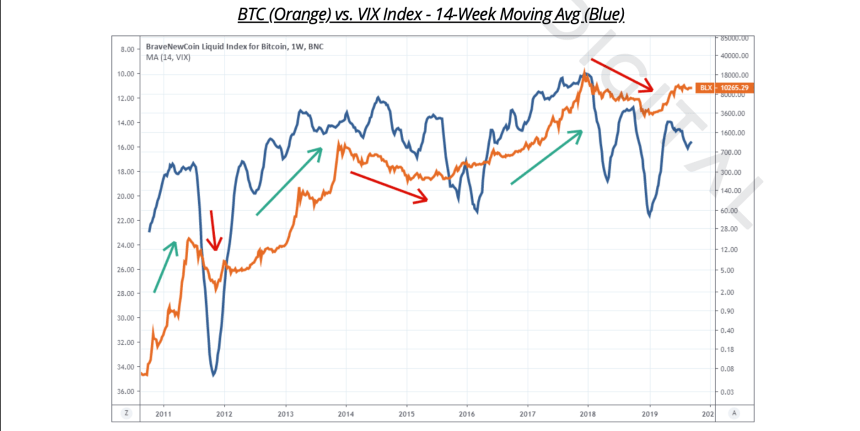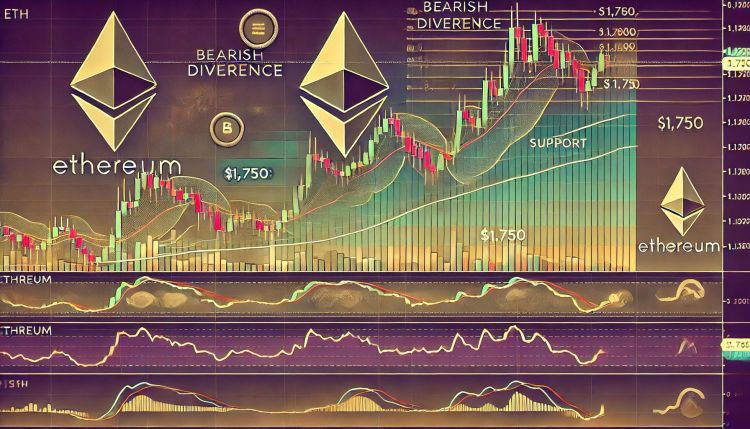Reason to trust

How Our News is Made
Strict editorial policy that focuses on accuracy, relevance, and impartiality
Ad discliamer
Morbi pretium leo et nisl aliquam mollis. Quisque arcu lorem, ultricies quis pellentesque nec, ullamcorper eu odio.
Bitcoin exhibits no correlation with traditional asset classes. But it is gradually developing a relationship with the volatility derived from the US equity market, according to Kevin Kelly of New York-based analytics firm Delphi Digital.
The chartered financial analyst said in a report that bitcoin tends to perform better during periods of low volatility, as represented by VIX Index, a measure of the US stock market’s volatility derived from real-time S&P 500 index options. Citing bitcoin’s bull run in 2017, Kelly noted that VIX was low in the same year, reflecting one of the least volatile years for US stocks. Nevertheless, after when bitcoin price peaked and corrected downwards later, VIX spiked to its highest level since August 2015.
“The relationship is far from perfect, but we’ve seen multiple instances where a rise in market volatility corresponded with a pullback or sell-off in BTC,” wrote Kelly. “This is a significant trend to monitor since the end of cycles usually bring more considerable uncertainty and asset price volatility.”
This year in August, the correlation between VIX and Bitcoin came near its highest level since January 2017. A week back before the occurrence, bitcoin had established its year-to-date high of around $14,000. The VIX Index, at the same time, was trending lower, signifying low volatility in US stocks options.
Cryptocurrency exchange OKEx said in a note Gold exhibited a positive correlation with bitcoin in lines with VIX, adding that Dow Jones had a negative relationship with the cryptocurrency.
“Investors should cross-reference the correlation data before making any trade decision,” the Malta firm reminded.
Irregularity
Low volatility in US equities tends to push traders and investors to assets showing a higher level of price swings. Kelly noted that in 2017, speculators started moving to bitcoin and other cryptocurrencies as US options became motionless. The analyst indicated that traders wanted to test bitcoin partially because it was a non-correlated and nascent asset at that time. And favorable media reports were projecting its technology – the blockchain – as revolutionary.
“This was a key catalyst for many FX and derivatives traders getting interested in bitcoin and crypto in the first place,” wrote Kelly.
The VIX Index is now going lower as investors digest the prospects of a string of macroeconomic risk, including the ongoing US-China trade dispute, central bank rate cuts, and quantitative easing programs. Bitcoin, on the other hand, is consolidating sideways insider a broader triangle pattern. That shows the cryptocurrency is breaking its positive correlation with the VIX Index. OKEx notes:
“Many of the time that BTC and the VIX were in an inverse relationship back in 2018, and the way how they relate to each other has regularly been shifting. So, the ideal strategy would be using aggregated data, such as the combinations of other correlations and exchange/asset flow data, to achieve positive results.”






















